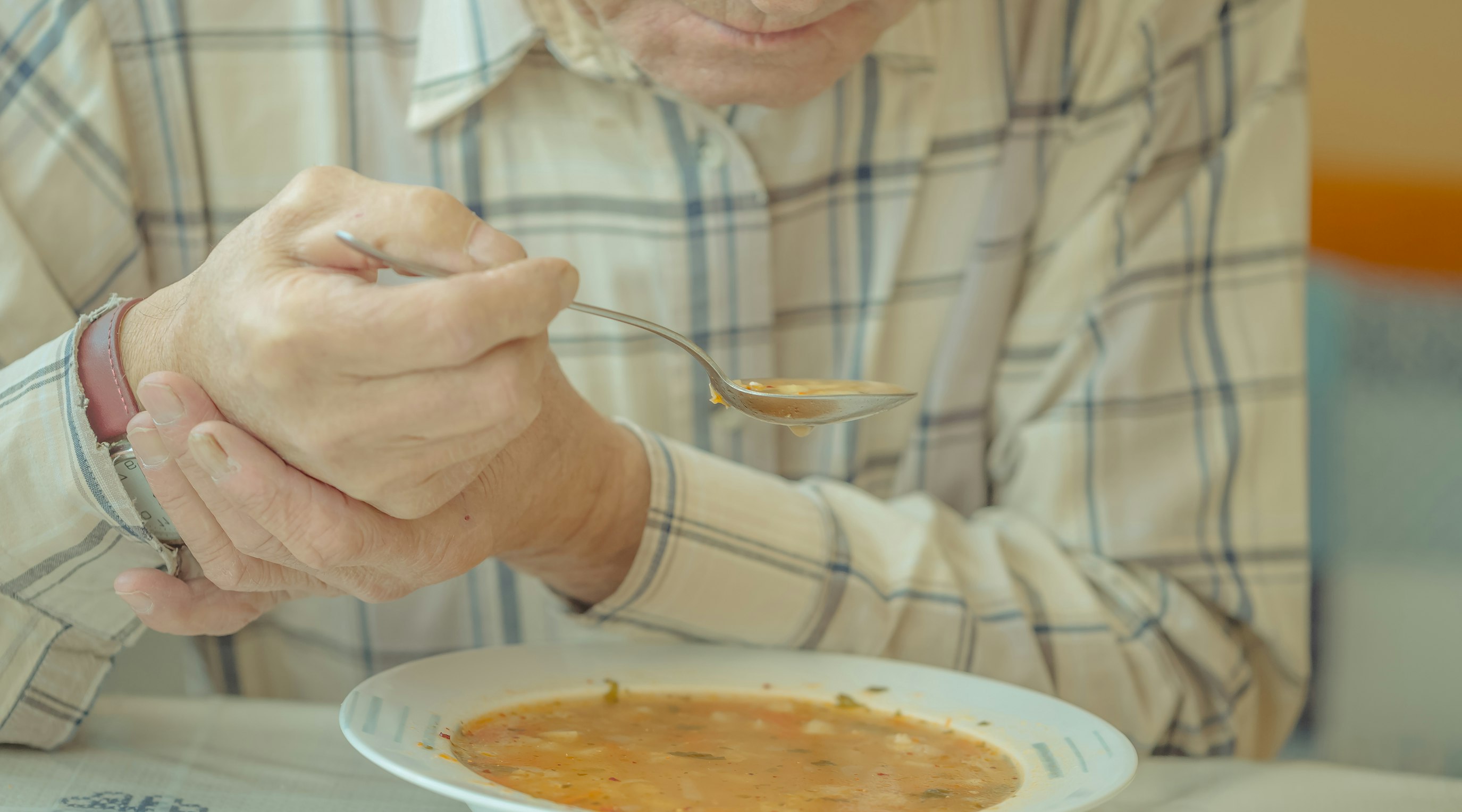Parkinson’s Disease is a neurological condition that causes the deterioration of dopamine-producing cells in the brain, which in turn causes a range of symptoms that can be categorised into two forms: motor symptoms and non-motor symptoms.
Positive effects on motor symptoms such as tremors and muscle spasms have been noted in studies that analysed the effects of cannabis compounds like CBD on symptoms of Parkinson’s Disease, whilst non-motor symptoms typically associated with the condition like anxiety and sleep disruption have even shown positive responses to CBD products that can be purchased over the counter.
In this article we aim to answer any questions you may have about how to take medical cannabis, specifically, CBD oil for Parkinson’s Disease, explaining the evidence behind this cannabinoid’s activity within the body, and its influence on symptoms of PD.
Benefits of CBD oil for Parkinson’s Disease
Although the benefits CBD can have on anxiety, pain, and inflammation are well recorded in medical journals around the world, there are very few that investigate the impact this cannabinoid can have on Parkinson’s Disease specifically.
In 2009, a team of Brazilian researchers assessed the efficacy of CBD in the management of physical and mental health symptoms experienced by patients with Parkinson’s Disease. This four-week-long study found that 150 mg of CBD in capsule form reduced the overall severity of non-motor symptoms, as seen by Unified Parkinson’s Disease Rating Scale scores, and an improvement in the psychotic symptoms associated with the disease.
Ten years later, in 2019, a team of American researchers noted significant improvements with double this dosage, this time in Parkinson’s Disease Questionnaire scores. When patients were treated with 300 mg of CBD a day, patients who typically experienced nightmares or loss of muscle atonia multiple times a week before starting treatment also noted almost a complete reduction in sleep disturbances when consuming CBD.
Studies into other neurological and degenerative diseases show that the anti-inflammatory and antispasmodic properties of CBD can reduce the occurrence and severity of muscle spasms.
This indicates CBD may hold promising potential in relieving similar symptoms experienced by patients with Parkinson’s Disease, however, there is a need for further clinical evidence to support this well-accepted theory.
How to use CBD oil for Parkinson’s Disease
Although studies have noted impressive effects using between 150 and 300 mg of CBD in patients with Parkinson’s disease, it is important to emphasise that dosing is not a universal ‘one size fits all’ measure. Factors like age, weight, metabolism, and gender all influence the absorption of CBD, and once inside the body, cannabinoids like CBD have the potential to interact with certain pharmaceutical medications.
Because of the large number of variables, there are no specific CBD dosage instructions advised for Parkinson’s Disease, and so like when treating any other ailment, Parkinson’s patients are advised to start with a low dosage that can be gradually increased until the optimal dosage is achieved.
With the ‘start low and go slow’ mantra, there is a small amount of trial and error required in order to attain maximum therapeutic value with minimum side effects. Having an informed discussion with a doctor or healthcare professional can help you evaluate dosages and possible drug interactions with other prescribed medications, limiting the risk of experiencing side effects when starting CBD treatment.
All of this lends credence to the fact that, when starting any type of cannabinoid therapy, the need for a full and in-depth discussion with a doctor that is registered and experienced in prescribing cannabinoids is paramount. Only they can advise you on the correct dosages and methods of administration for your unique set of circumstances.
When starting your journey with CBD, it is important to remember that different application techniques affect the speed of CBD absorption and therefore, the emergence of its effects. New consumers are often advised to stick with one type of product when consuming CBD for the first time, to ease dosage calculations and administration.
Certain CBD oils are designed to be vaped and inhaled, allowing quick absorption and access to the brain, but most CBD oils are administered sublingually. When CBD oil is held under the tongue, its cannabinoid contents are absorbed through the lining of the mouth and directly into the bloodstream, and therapeutic effects can occur within a matter of minutes.
Topical products containing CBD work in a similar way, permeating the skin layer by layer which hold cannabinoid receptors, whilst edible products like CBD capsules have to pass through the stomach, intestine, and liver before becoming ‘activated’, and so their effects on the body are delayed.
Risk and possible side effects
Even though CBD is deemed to be generally safe for use in humans by the World Health Organisation, there are some risks and side effects associated with its use. The most frequently experienced side effects or adverse reactions to CBD are not believed to be dangerous to health and are classed as ‘minor effects’, but they can still be unpleasant to experience.
Possible side effects of CBD oil:
- Fatigue
- Irritability
- Nausea
- Diarrhoea
- Dry mouth
Scientist’s theorise that ‘overdosing’ on CBD comes with no risk of death, and cannabidiol doesn’t reach a potentially harmful dose unless around 20,000 mg is taken in one go. However, side effects have been noted when CBD is taken in high doses, such as abnormal liver-related blood test results.
Cannabis compounds are metabolised in the same way as many conventional medicines in the liver, and so drug interactions often occur. CBD has been shown to interact with certain prescription medications in a number of ways, from improving their efficacy to increasing the severity of their side effects.
Again, it is always important to seek medical advice from your doctor or a healthcare professional, so that you can receive recommendations that are tailored to you as an individual and diminish the risk of experiencing adverse reactions.
Final thoughts
Multiple research teams have studied the potential that CBD may hold in providing symptomatic relief to patients with Parkinson’s Disease – a neurological disorder that affects movement.
These studies suggest taking between 150-300 mg of CBD daily holds therapeutic value for Parkinson’s patients, particularly in helping reduce non-motor symptoms like sleep disturbances and muscle spasms.
The amount of CBD required to achieve the desired effects is individualised and varies between patients, and so it is essential to speak with a medical professional before starting any type of cannabinoid therapy. Additionally, interactions between CBD and other medications should be taken into account to minimize the risk of experiencing adverse reactions.
Accessing medical cannabis can be challenging due to the stigma surrounding it. However, Releaf makes it simple with our tailored monthly packages, specialist consultations for medical cannabis, and a unique medical cannabis card for protection, all based on your cannabis prescription.





